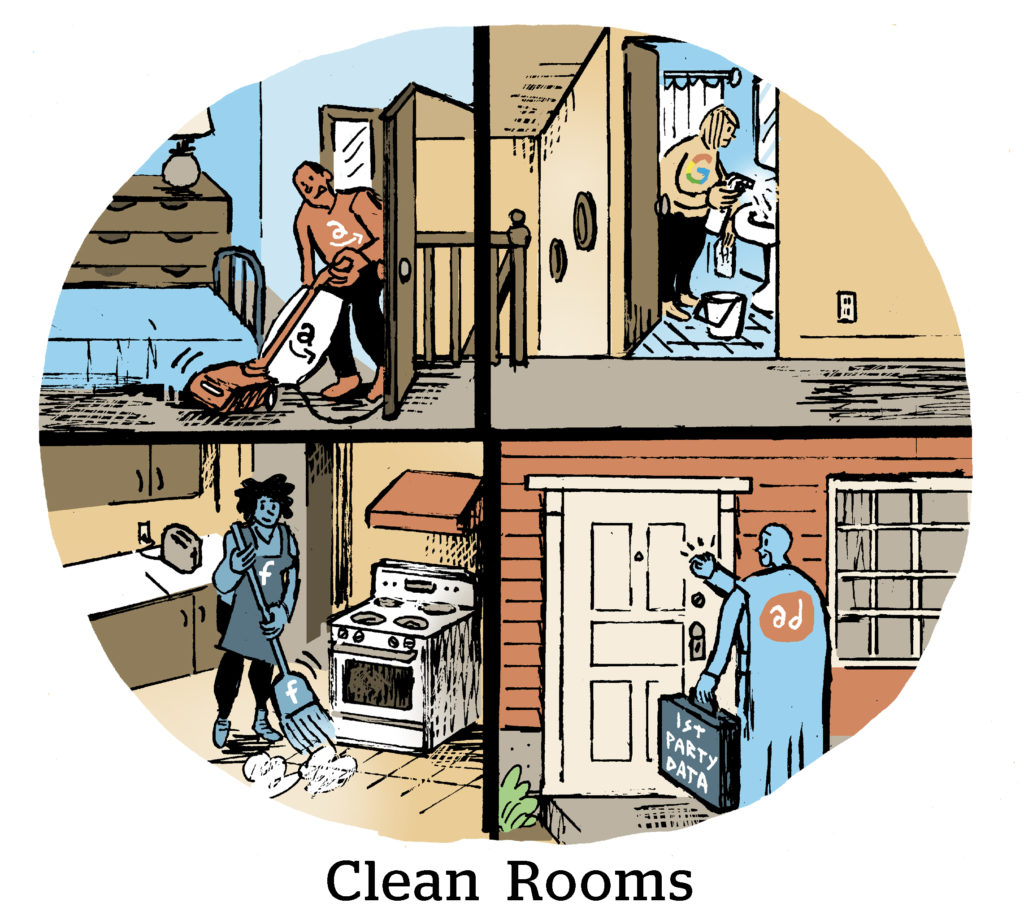
Here’s today’s CTV news round-up… Want it by email? Sign up here.
And that’s a wrap for the postholiday palooza that is CES.
As lawn-mowing robots and color-changing BMWs roamed the showroom floor in Las Vegas last week, I was a few doors down discussing data privacy and all things CTV, including measurement and clean rooms, with industry executives and politicians.
Privacy was an overarching theme.
“As a country, we’ve invested heavily in tech over the last two years – but we’ve done nothing about [regulating] social media,” Sen. Mark Warner (D-VA) told me at CES. “We don’t even have federal privacy legislation. It’s kind of mind-blowing to me.”
TikTok specifically poses a national security threat because American data is accessible to employees based in China. Warner is concerned, but he told me he’s “reluctant to pass a bill that attacks one app only.”
In the meantime, though, reeling in dark patterns – including those that dupe people into sharing their data – is “low-hanging fruit” for the ad tech industry to tackle, he said.
A little privacy, please
A privacy reckoning is coming for the TV industry, too.
Measurement providers and publishers are leaning heavily on automatic content recognition (ACR) to track ad exposures and link them to business outcomes.
But executives at CES hedged when asked about the privacy implications. The consensus? As long as there’s consent, using ACR is fine.
Still, there are very real privacy concerns for broadcasters to consider.
For example, OEMs say they’re getting consent for tracking, but is it really informed consent? And ACR carries the additional risk of potentially linking viewing history to an individual, which is illegal without the proper consent.
Yet ACR is valuable for measurement because it provides device-level – and census-level – data, which is something that audience panels lack.
Privacy concerns aside, CTV publishers are finally gearing up to transact real dollars against Nielsen currency alternatives during this year’s upfronts (although a publisher-sanctioned standard won’t be ready until at least 2024).
Cleaning up measurement
Sticking with privacy, I’ve also been diving deep into how the TV industry uses clean rooms.
Clean rooms promise data-sharing infrastructure that won’t leak personal identifiable information, and TV publishers are jumping on the trend.
But the “cruel irony about clean rooms” is that they’re a lot less interoperable than advertised, said Justin Rosen, SVP of data and analytics at Ampersand, speaking at CES.
Brands can only use clean rooms to scale an audience on a particular platform, which means a clean room can’t help with reach and frequency measurement across multiple publishers – something TV advertisers desperately need.
Expect to hear more this year about so-called “clean tech,” meaning cloud-based infrastructure that could potentially enable data sharing between different clean rooms. (Snowflake has entered the chat.)
But here’s what I’ve been wondering: Can privacy and measurement finally come to a truce in 2023?
Let me know what you think. Hit me up at [email protected]






 By
By 


